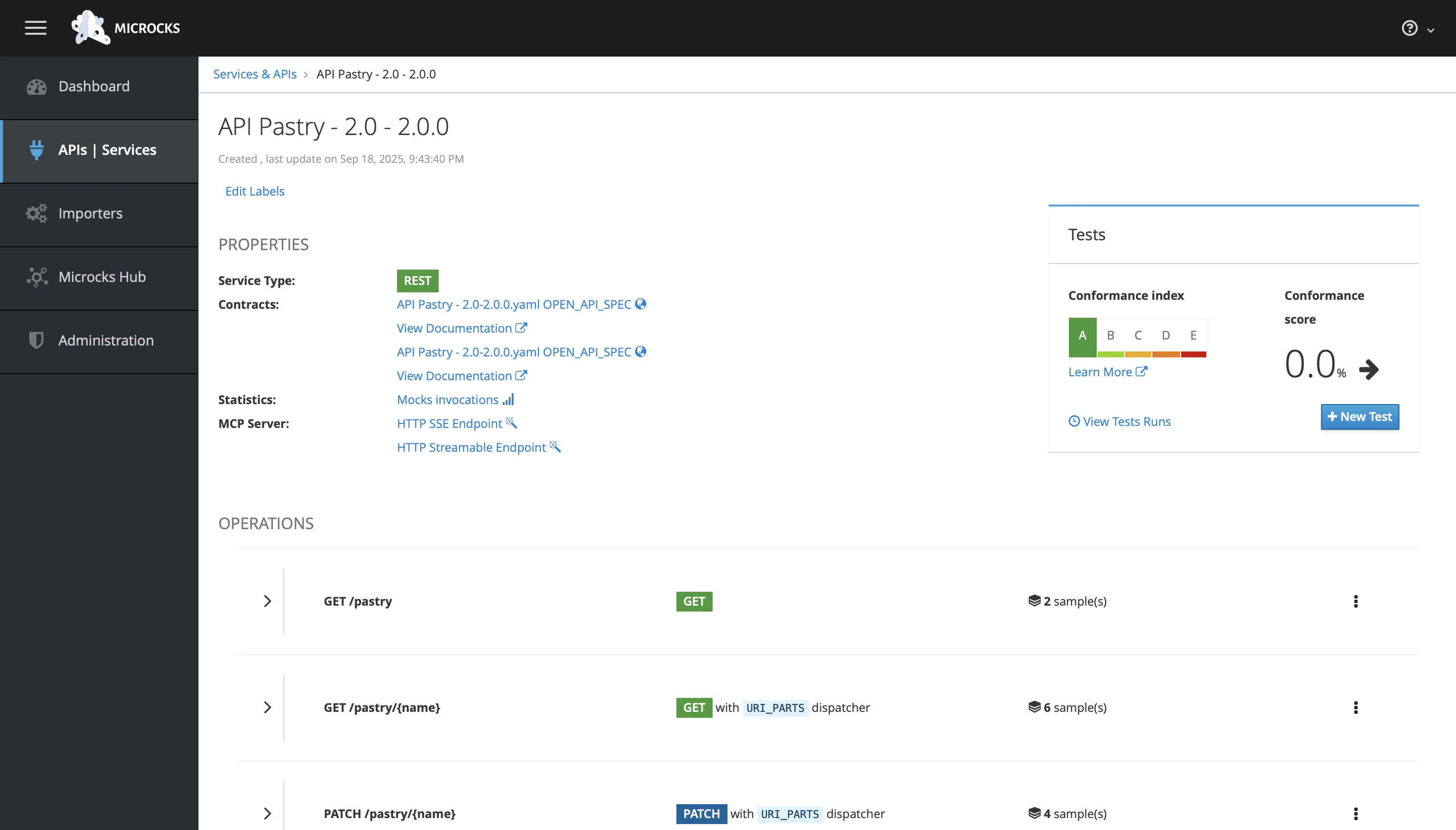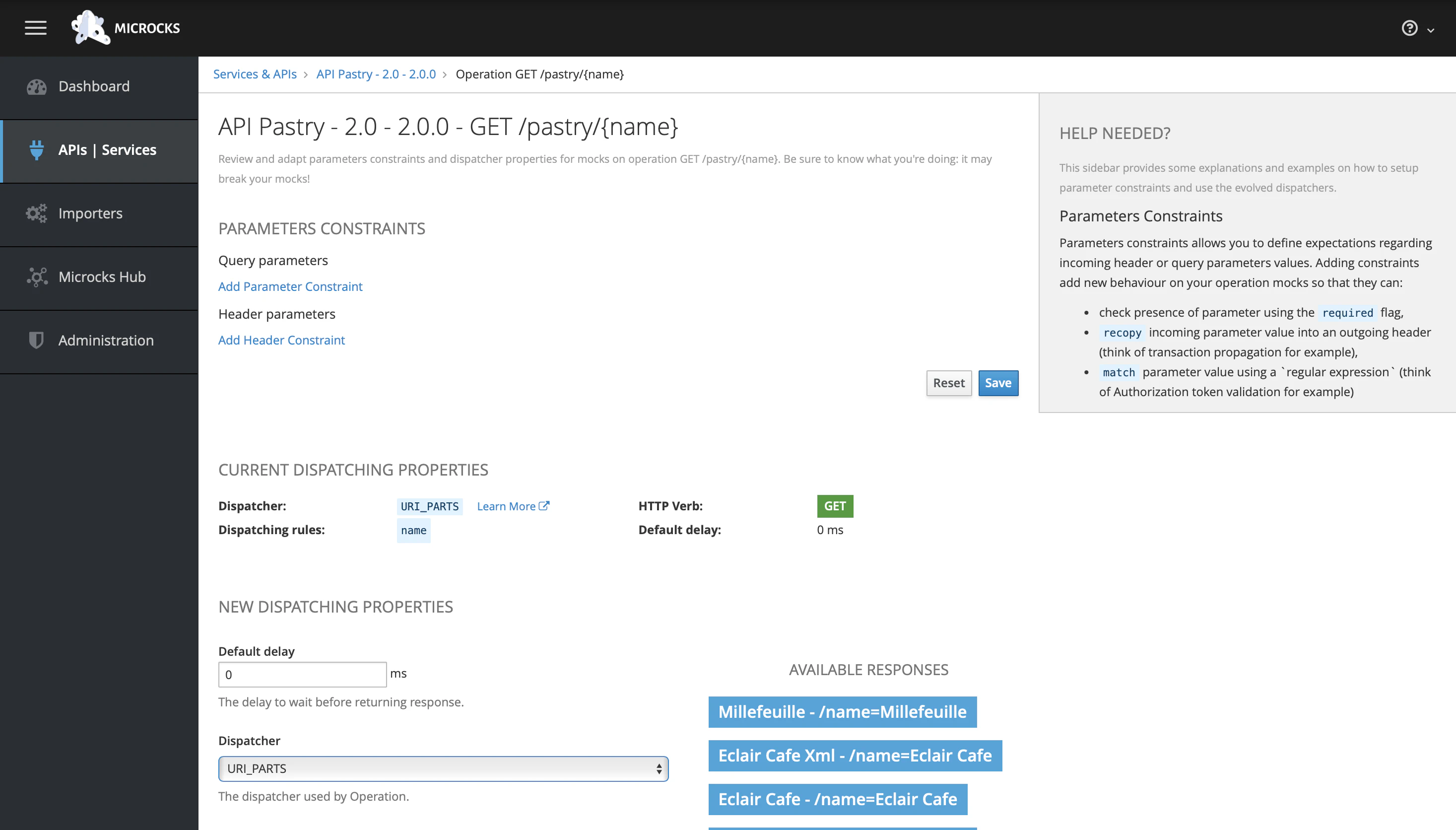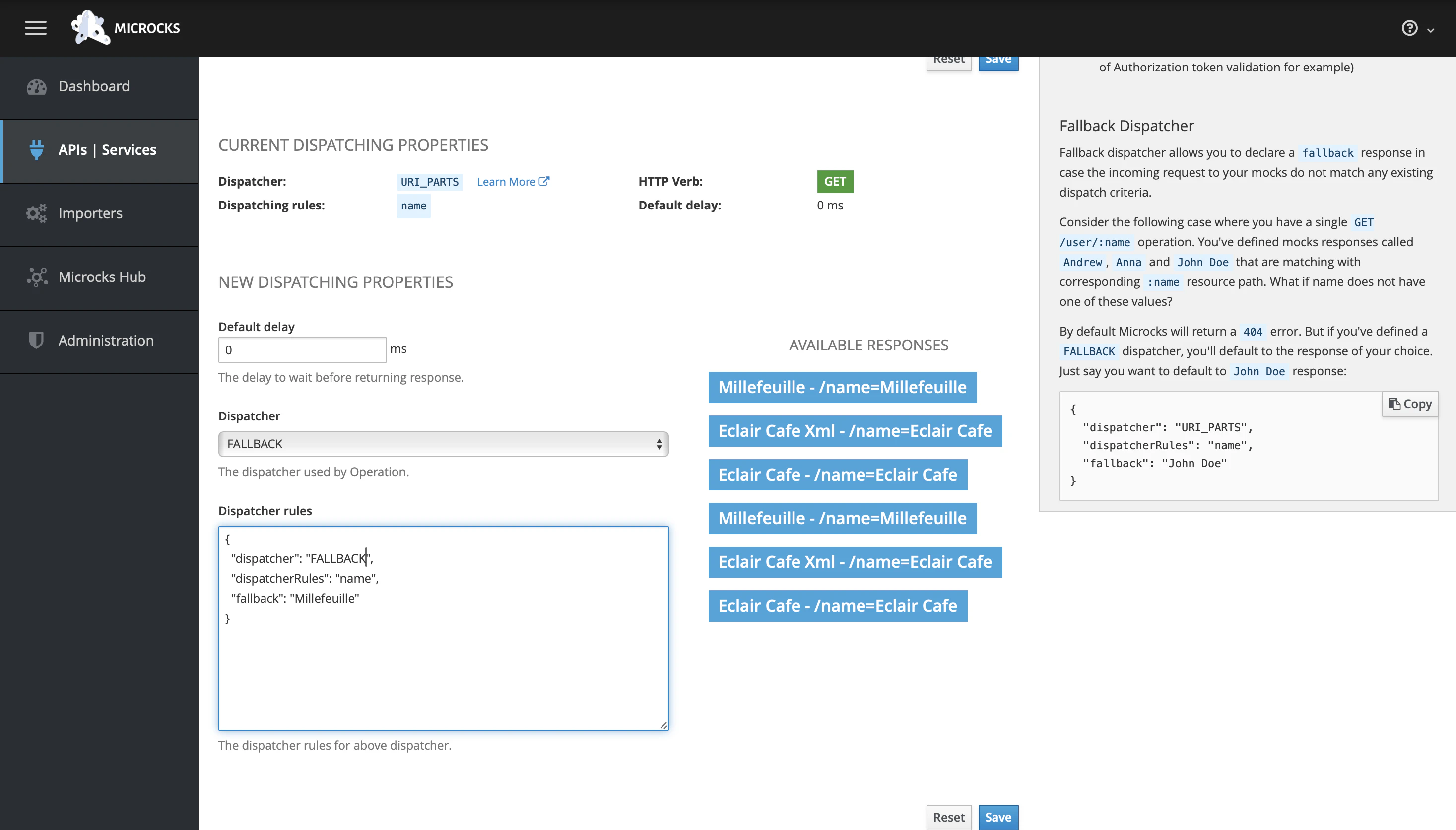Setting custom dispatcher
🗓️ Last updated on November 9, 2025 | 4 | Improve this pageOverview
Custom dispatchers let you control how Microcks selects the response example to return for a given request. Instead of relying only on inferred rules, you can explicitly tell Microcks which request elements to inspect (headers, URL parts, query params, body, scripts, proxies, etc.) and how to route to a named example.
This guide shows how to set a custom dispatcher on an operation, verify the effect via the UI and with curl, and then how to achieve the same using OpenAPI extensions, API Metadata, or the Microcks API.
When to use this guide:
- When the default, inferred rules do not match your needs.
- When you want predictable routing based on headers, payload, or a fallback.
- When you need to keep custom dispatch logic together with the API definition or manage it externally.
1. Concepts
- Dispatcher: The strategy that defines which request elements are examined (for example:
QUERY_HEADER,URI_PARTS,JSON_BODY,SCRIPT,FALLBACK,PROXY,PROXY_FALLBACK). - Dispatching rules: The expression or configuration associated with a dispatcher. For example, for
QUERY_HEADER, it’s the list of header names to consider; forJSON_BODY, it’s a JSON Pointer-based expression with cases; forSCRIPT, it’s a Groovy or JavaScript script returning a response name. - Scope: Dispatchers are configured at the operation level (for example,
GET /pastry/{name}). They are persisted in Microcks and survive future refreshes/imports unless overwritten by extensions or metadata.
For a broader tour and advanced strategies, see Dispatcher & dispatching rules.
2. Practice
We will use the API Pastry - 2.0 sample from the Getting Started tutorial. It contains multiple examples for the GET /pastry/{name} operation. We’ll set a custom dispatcher to demonstrate a default response using FALLBACK when the requested pastry doesn’t exist (something distinct from default content negotiation, which Microcks already handles automatically).
Load the sample API
To load the API Pastry-2.0 sample into your Microcks instance, follow the Getting started tutorial.
Set a custom dispatcher via the UI
- Open the
API Pastry - 2.0service page. - Locate the
GET /pastry/{name}operation. Open the 3-dots menu on the right and choose Edit Properties. - In the dispatching section:
- Set Dispatcher to
FALLBACK. - Set Dispatching rules to the following JSON:
- Set Dispatcher to
{
"dispatcher": "URI_PARTS",
"dispatcherRules": "name",
"fallback": "Millefeuille"
}
- Save.
This tries to match a response by the name path parameter first (using URI_PARTS). If no example matches (unknown pastry), Microcks returns the Millefeuille example as a default.
Note: You do not need QUERY_HEADER to implement content negotiation on Accept — Microcks already returns the appropriate representation if multiple media types exist for the same example.
Verify with curl
Call the mock endpoint with an existing pastry name, then with an unknown one to observe the fallback:
curl -X GET 'http://localhost:8585/rest/API+Pastry+-+2.0/2.0.0/pastry/Eclair%20Cafe'
curl -X GET 'http://localhost:8585/rest/API+Pastry+-+2.0/2.0.0/pastry/Unknown%20Pastry'
The second call returns the Millefeuille example thanks to the FALLBACK configuration.
Tip: You can pick other strategies depending on your needs:
JSON_BODYto route based on a value in the request payload.FALLBACKto always return a default response if no match is found.SCRIPTfor full flexibility with Groovy or JavaScript.
3. Other ways of proceeding
UI editing is convenient, but you may prefer a declarative approach that travels with the API or is managed externally.
Using OpenAPI extensions
Add an x-microcks-operation block at the operation level in your OpenAPI file, then re-import:
paths:
/pastry/{name}:
get:
x-microcks-operation:
dispatcher: FALLBACK
dispatcherRules: |
{
"dispatcher": "URI_PARTS",
"dispatcherRules": "name",
"fallback": "Millefeuille"
}
On the next import, this will overwrite any UI-edited dispatcher configuration for that operation. See OpenAPI extensions.
Using API Metadata
Keep dispatch config outside of the API definition using an APIMetadata artifact:
apiVersion: mocks.microcks.io/v1alpha1
kind: APIMetadata
metadata:
name: API Pastry - 2.0
version: '2.0.0'
operations:
'GET /pastry/{name}':
dispatcher: FALLBACK
dispatcherRules: |-
{
"dispatcher": "URI_PARTS",
"dispatcherRules": "name",
"fallback": "Millefeuille"
}
Import this as a secondary artifact (via Importers or Upload). It will set or overwrite the dispatcher for the target operation. See API Metadata Format.
3.3 Using the Microcks API
You can also update an operation programmatically. After obtaining a token (see Connecting to Microcks API), call the OpenAPI endpoint to update an operation:
curl -X PUT 'https://microcks.example.com/api/services/{serviceId}/operation' \
-H 'Authorization: Bearer $TOKEN' \
-H 'Content-Type: application/json' \
-d '{
"name": "GET /pastry/{name}",
"dispatcher": "FALLBACK",
"dispatcherRules": "{\n \"dispatcher\": \"URI_PARTS\",\n \"dispatcherRules\": \"name\",\n \"fallback\": \"Millefeuille\"\n}"
}'
Refer to the Open API reference for the full payload structure and how to retrieve the serviceId.
Wrap-up
- You set a custom dispatcher at the operation level and verified it using curl.
- You saw how to declare the same behavior using OpenAPI extensions or API Metadata, and how to automate it via the Microcks API.
Next steps and related topics:
- Learn more about strategies: Dispatcher & dispatching rules
- Keep it in your artifact: OpenAPI extensions
- Manage separately: API Metadata
- See similar guides: Importing Services & APIs · Defining delays for mocks

Still Didn’t Find Your Answer?
Join our community and get the help you need. Engage with other members, ask questions, and share knowledge to resolve your queries and expand your understanding.
Join the community


